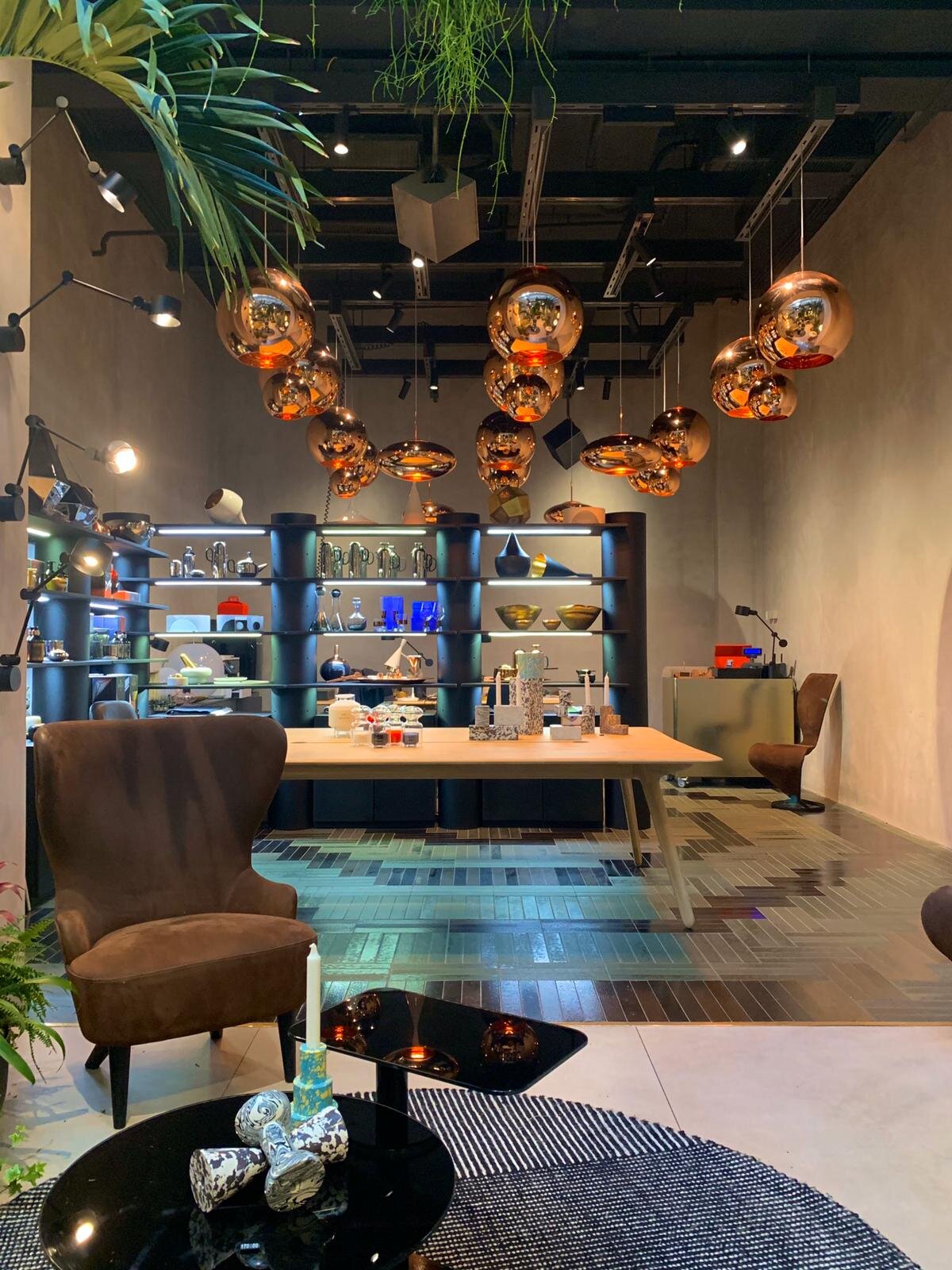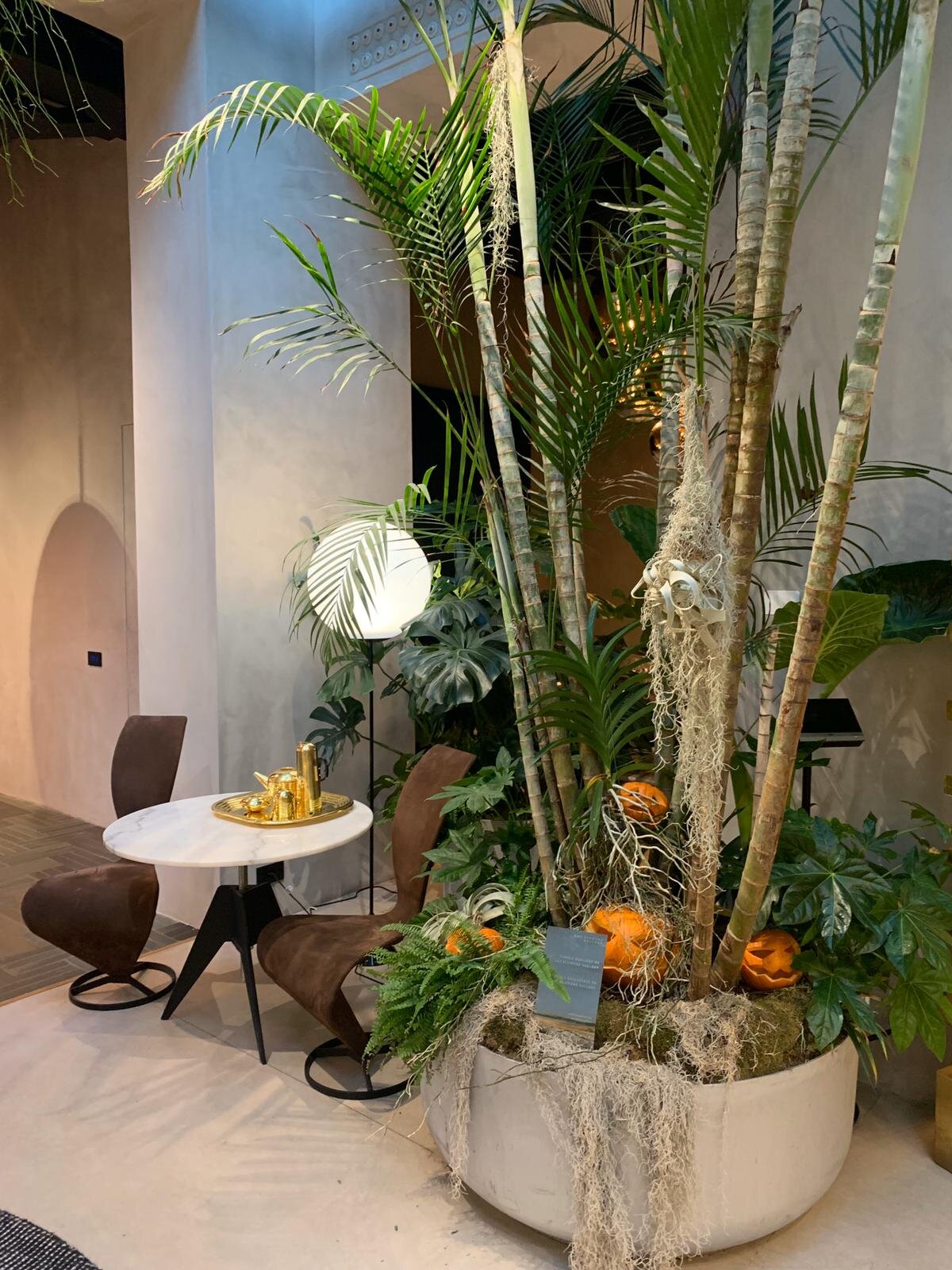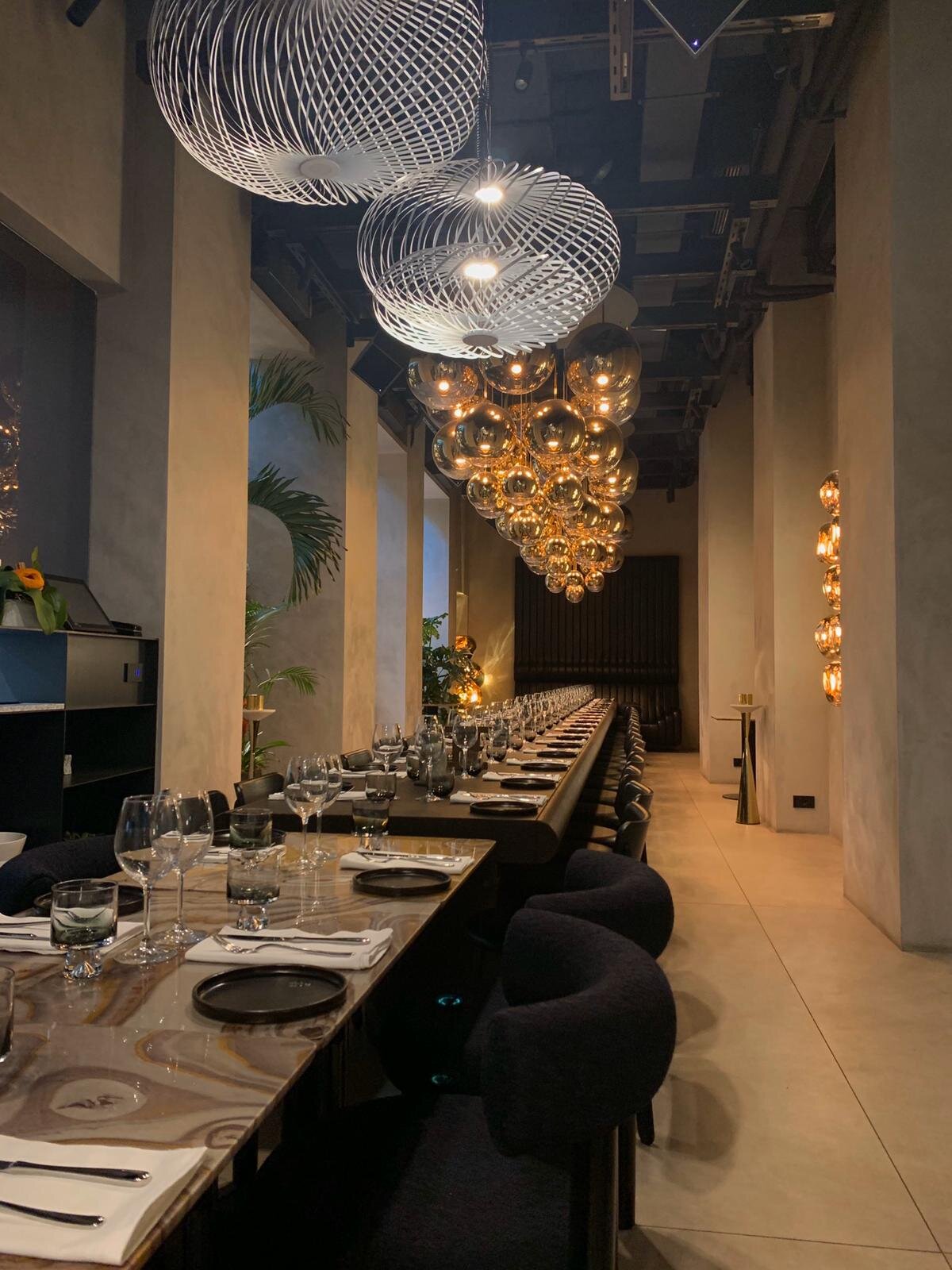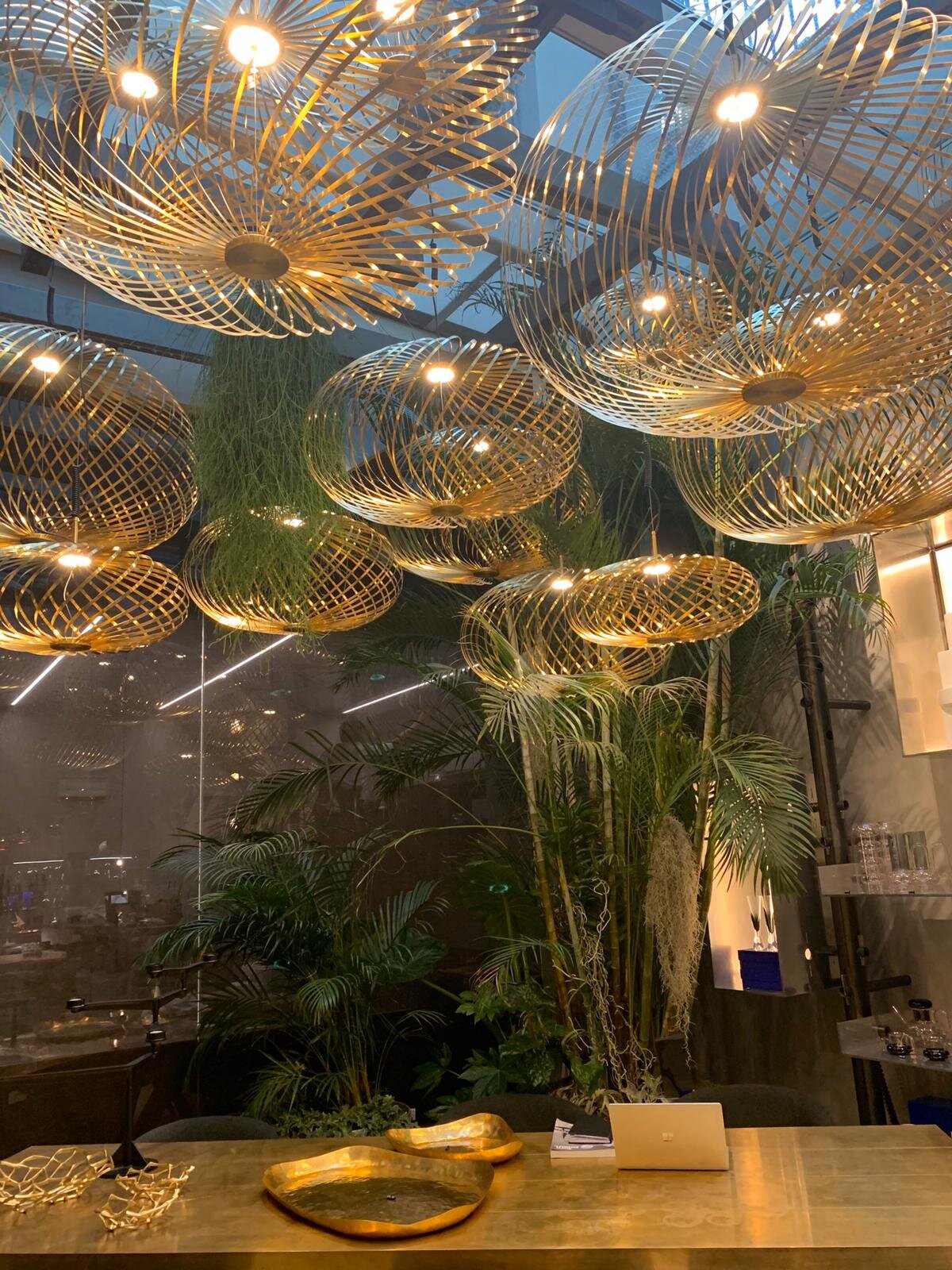Business & Arts Talks To Secopot Consulting
In a world with increasing concern surrounding sustainability, all sectors of society are affected- with art and design in the frontline. Recently, we were fortunate to have Secopot Consulting, an innovative organization set out to reduce the carbon footprint of events such as parties and festivals, invite us to their debut event. The event took place at The Manzoni, an artistic event space and restaurant in the heart of our very own Milan. The Manzoni is unique due to the fact that the concept of the space was created by Dixon’s Design Research Studio it features furniture and light fixtures exclusively designed by Tom Dixon who is one of the leading figures in terms of sustainability and the usage of unorthodox techniques. We had the opportunity to interview Danilo Imperiali Corte and Jenny Daniela Salazar Zapata, the first one being the Brand Manager Italia for Tom Dixon, the second being the founder of Secopot Consulting.
What made Tom Dixon’s interior design pieces feel relevant in the context of sustainable design and art?
D: “When Tom started talking about sustainability it wasn’t usual. He didn’t start as a designer but as a musician so his approach was different. In terms of sustainability, since the beginning of his career, he approached his artworks by reusing materials. For example, for his “Swirl Collection” he used powder productions of marble so to reduce the waste of material. For his “Spring light lamp” he has used flexible steel. These items have the ability to change shape and become flat--this way the packaging becomes smaller and the costs of materials and transportation decrease. The “Beat Collection” is handcrafted in India and made by using rudimental techniques and it takes longer because they don’t use machines. The latest is what we call an example of “Slow Design”. Regarding the material used, we pay attention to use materials produced consciously, for example, we work with a Scottish brand that produces recycled cotton and fabrics that we use to produce our items. Our approach starts with the material used but goes further and interests both the production process and what comes after it like transportation and packaging.”
What will be the greatest challenges the art world will face in creating in a more sustainable way?
D: “Creating innovative solutions is part of the design. Using new technologies and materials is interesting for a designer as well. Now, sustainability feels like a trend but it is indeed a responsibility. It has started with fashion but it is now expanding to other sectors as well. The greatest challenge would be to adopt a new approach with consciousness and a long term point of view.”
Do you think that designing and creating art in a sustainable way could potentially add something to the meaning or aesthetic of that art?
D: People can identify themselves with the approach and the material, it’s a more human dimension because they know the designers are speaking directly to them. [Sustainability] makes art more personal because [the audience] can connect more with the object. It’s forced for all companies so it’s good to find a language that feels natural. We are going back to what is called “Holistic design” where the focus is the use and utilitarian purpose of the items. Of course, we must consider other sides like the economic and sustainable one, but right now the focus seems to go back to the functional one.
What do you think is the greatest challenge in converting the artistic processes of artists into a more sustainable one?
D: “In the recent past, design and art had different purposes. Artists had manifestos and their works had specific meanings. On the other hand, design was just a response and solution to a problem. Design can be more sustainable and attractive but also has to appeal to the next generation. However, we must realize that nothing is “really” sustainable and that we’ll always have some type of impact. For this reason, while still pushing towards a more sustainable lifestyle, we should accept that some piece of art or design can still be good and valuable even if it is not completely impact-free.”
After our very interesting chat about the implications of a fast-moving wave of environmentally conscious production and art, we had a conversation with the co-founder of SecoPot Consulting, Jenny.
What is Secopot’s mission and how did it start?
J: [SecoPot’s] Mission is to deliver sustainable consultancies as solutions to mitigate, prevent and compensate (MPC) the impacts generated in events with the use of special operational performance index (SOPIs).”
“The whole concept began because we enjoy participating in events such as festivals. After attending a Festival in Turin, we were so astonished by the quantity of plastic leftover, damage to the venue, traffic created by the attendees, water and energy usage that it became clear that sustainable strategies must be integrated with the event organization from the initial planning until the project closure.
What are some ways in which Secopot is approaching this mission?
J: “Our strategy to deliver our mission focuses on offering a circular consultancy program that involves 3 stages. First, strategies to mitigate and prevent the first impacts the event might generate. Second, strategies to compensate for the impacts. Third, providing feedback about the development of the project and strategies to correct them in the following edition of the event.”
Tell us a bit about the aim of this event?
J: “The aim is to execute a pilot project to start the understanding of the market, customers, venues, and functioning of SecoPOT consulting, also to start a portfolio of events to attract customers.”
How important is the location of an event in the event organization and curation process?
J: “The venue is one of the most important aspects of event management due to the reductions in emissions that could be met with a strategic localization. Multiple authors agree that transport is the largest contributor to the overall carbon footprint of a regular event. Therefore, if the venue is well-located emissions of CO2 will drop drastically.”
Through Secopot’s social media platforms sharing examples of sustainable actions ranging from small to massive ones, what is the goal message for your audience to takeaway?
J: “To inspire. We know that climate change is happening and terrible outcomes are being generated due to the lack of global uniform commitment. With this in mind, with SecoPOT we want to present initiatives to the general public that are changing the concept of living, getting closer to sustainability and therefore getting closer to a circular economy model that will secure a better living for future generations.”
Do you have any advice for people to follow so they can "apply" the approach of this event to more daily activities?
J: Anyone can mitigate and prevent their footprint by adapting small changes to their daily life. One of the most important changes to be performed is the application of the triple R (reduce, reuse, recycle) in our daily lives. But overall we want to underline that you should not perceive the climate change and environmental topic as something far fetched, where we have no voice nor quantifiable effect. Rather, think that if each of us starts to act locally, the effect will be global!







